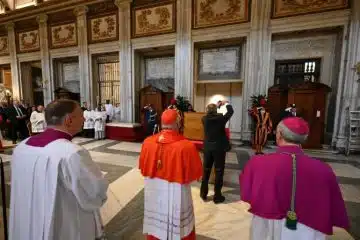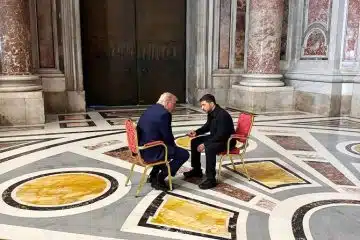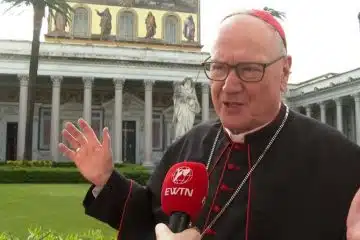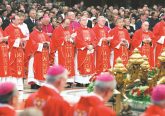The Catholic Moment: Rome through new eyes
Thursday, July 8, 2010
By Father Kyle Schnippel
“Um, Mom, this is the small one.”
Two years ago, I had the opportunity to travel to Rome with my parents. They had never been, while I was making my fourth trip to the Eternal City. I had a sense of the city, the scale, the majesty, prior to our arrival, but it was fascinating to experience the ‘newness’ of entering Rome for the first time through the eyes of my parents.
Mom’s jaw had dropped upon entering the Basilica of St. Mary Major, one of the four major basilicas in Rome. The gold leaf on the ceiling, the altar and canopy that dominate the space and the shear volume of space was overwhelming for a first time visitor, yet St. Mary Major is dwarfed by her three larger sibling basilicas — St. Peter’s, St. John Lateran and St. Paul Outside the Walls. As my mother experienced, the faith was much bigger than our little parish in western Ohio.
As I write this, I am preparing to return to Rome for the fifth time, this time with a group of pilgrims from the Archdiocese of Cincinnati who are journeying with Archbishop Dennis M. Schnurr as he receives the pallium from Pope Benedict XVI. I can’t wait to once again see the look of awe as someone enters St. Peter’s, or experiences the joy of flipping a coin into Trevi Fountain or strolling through the Roman Forum for the first time.
For those who make a trip to Rome, the impact can be lifelong. To walk the streets where Peter and Paul walked, to visit the prison where Peter was held before his martyrdom, to see the altars built up over the remains of the names we hear in the Roman Canon, our faith comes alive. There is a strong recognition of the universality of our Catholic faith, a universality that is both across history as well as across the globe, for in Rome you truly come into contact with your brothers and sisters in Christ from all corners and all times.
The testimony of history and of cultures worldwide, however, can lead to a trap: one can become obsessed with the outward gleanings of the church. St. Peter’s Basilica is phenomenal, one of the largest structures in the world. The art contained in the churches and museums in Rome is priceless and transcendent and the cynical sort might ask, “Why doesn’t the church sell all this stuff and give the money to the poor?”
True, we could do so, but then we would lose the deeper meaning. These artistic treasures are the patrimony of the faithful, and so many of them are available to see without cost (well, except for the plane ticket to Rome!), which would surely change if they were sold into the halls of a private collector.
But even deeper, the many works and treasures in Rome are there because they express something, they teach, they form you as you walk among them. The Eternal City is just that because her very DNA is wrapped in Christ, and Rome expresses her faith in Christ in all the beauty and treasure that is contained in her ancient walls. Rome expresses not a dead faith, but a living reality — Christ.
To visit Rome is to meet our ancestors in the faith, to walk in the footsteps of martyrs, churchmen and women, great teachers and humble workers with the poor.
The difficulty is that we cannot all make this same trip, so what are those who remain to do? Luckily, here in Cincinnati, there are numerous churches and sites that serve as possible local pilgrimages. While not as epic in scale, they can serve much the same purpose. The two cathedrals in the Greater Cincinnati area, the Shrine Chapel in Maria Stein, St. Meinrad Archabbey in Indiana, or Gethsemane in Kentucky, all provide much the same encounter as Rome.
No matter the location, the universality of the church of Rome shines forth in all her splendor, and we thank God for the gift of the church to guide us closer to Him, both on earth as it is in heaven.













